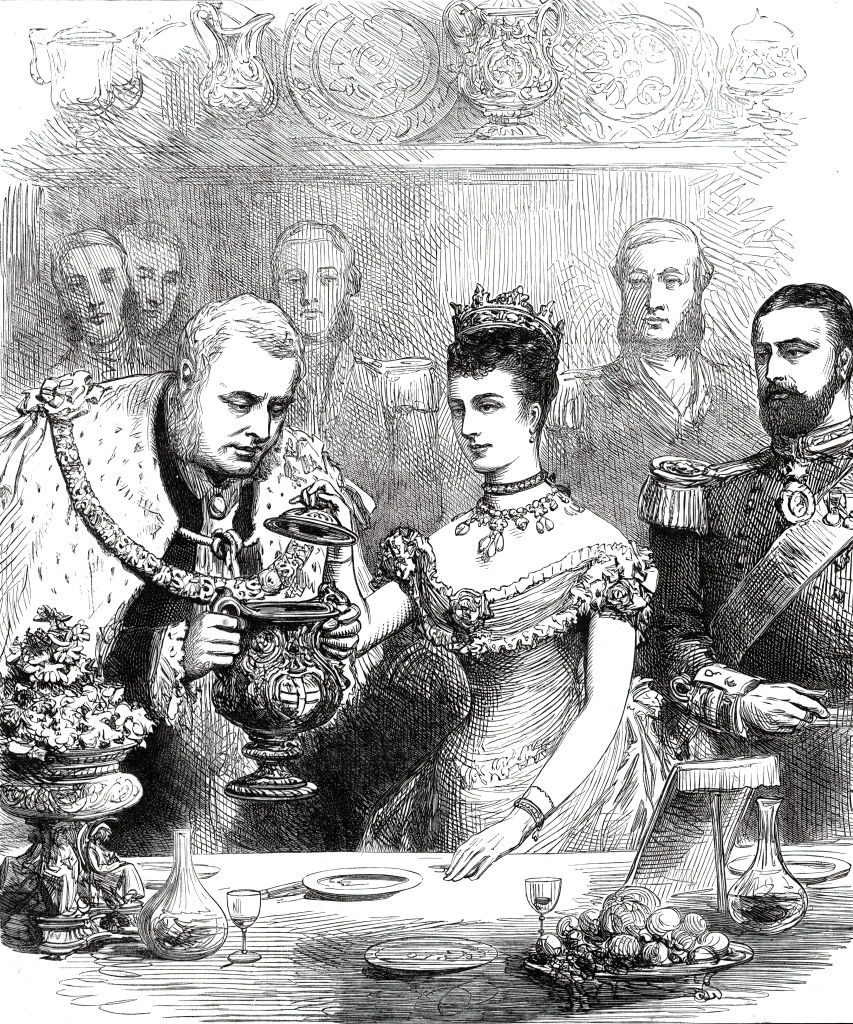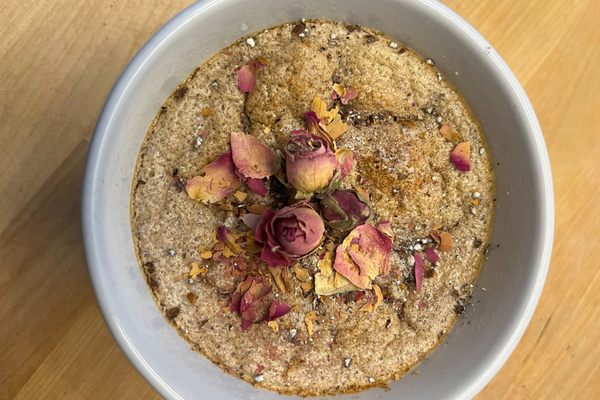Have a Trophy? Mix This Victorian Drink in It
Long before the Stanley cup craze, people were showing off with trendy drinking vessels.
THIS ARTICLE IS ADAPTED FROM THE JANUARY 27, 2024, EDITION OF GASTRO OBSCURA’S FAVORITE THINGS NEWSLETTER. YOU CAN SIGN UP HERE.
Going on social media these days, I see post after post of people either enthusing over their Stanley cups or trying to understand how a large insulated cup could become the accessory of the moment.
But people have always shown off their taste and wealth with trendy drinking vessels. In an 1871 issue of Harper’s Bazaar, a writer reported an English craze for huge drinks made with claret, champagne, or other wines that, at parties, “were to be handed ’round in a great silver cup with two handles, and the guest grasps by both, and drinks deep, after which the brim is wiped by a clean napkin passed through one of the handles.” The writer also added that the claret cup was so fashionable that “the reputation of some ladies’ hospitality depends on this alone.”

Chugging drinks out of a giant, communal silver cup is not a thing of the past. New Haven, Connecticut, is home to a private club called Mory’s. Since the mid-19th century, Mory’s has slung drinks to Yale students and faculty. It’s also home to one of the oddest drinking traditions I’ve ever encountered.
Mory’s offers a number of drinks, from the raspberry-flavored Purple Cup to the mimosa-like Gold Cup, served in massive two-handled silver trophies. Drinkers pass the cup around the table, each taking a sip. There’s an elaborate ritual that begins at the bottom of the cup: Whoever takes the last sip must ensure that not a drop remains inside, or else, by tradition, they’re obliged to pay for the whole thing. There’s also an accompanying song.
There’s all kinds of lore around Mory’s Cups. A Google search will turn up blogs sharing the “secret” recipes, usually consisting of champagne, various liqueurs, mixers, and soda water. Then there’s the forbidden Black Cup—a mysterious concoction that, according to legend, can be served to only two people: the president of Yale or the president of the United States.
Until recently, drinking communally out of huge silver cups was also a tradition in London’s livery companies. These professional guilds, which first appeared in the 12th century, have an elaborate ritual of sharing a “loving cup” of spiced wine during dinners. For example, at the The Worshipful Society of Apothecaries, table neighbors guard a drinker’s back while they’re sipping, and the person waiting to drink will hold the cup’s lid high in the air with their right hand while waiting their turn. This is supposedly meant to keep surprise assassinations to a minimum, since, according to one popular legend, King Edward the Martyr was drinking from a two-handled cup in 978 when he was stabbed in the back by his stepmother’s lackeys.

I’ve always been fascinated by these drinks, so I had to make one myself. Recipes abound—the father of American mixology, Jerry Thomas, included several recipes for “cups” in his 1862 book The Bar-Tender’s Guide. Wine cocktails like this appeared in cookbooks well into the 20th century, generally combining wine, liqueurs, sugar, ice, and various interesting garnishes.
I decided to make a champagne cup for my friends, based on various Victorian recipes. Many cups called for borage, a blue-flowered herb, as well as lemon balm. While once included for various health benefits, many recipes also noted that the herbs added a cool, refreshing flavor to the drinks. I couldn’t get my hands on any borage, but many recipes suggested using a slice of cucumber peel in its place. Mixing the ingredients together resulted in a deliciously light and tasty drink. Many books advised removing the cucumber peel after a few minutes, and we could taste why—after a while, it overpowered the other flavors.
We broke from tradition, though, and used our own glasses instead of chugging straight from a communal cup. We aren’t alone. COVID-19 spurred many of London’s livery companies to modify their loving cup traditions for the time being. In 2023, both the Worshipful Company of Plumbers and the Worshipful Company of Distillers passed around silver cups filled with wrapped chocolates instead.

Champagne Cup
Ingredients
- A bottle of champagne
- Four cups of sparkling water
- 3 ounces of brandy
- 3 ounces of curaçao
- Two tablespoons superfine sugar
- Two to three cups crushed ice
- Two strips of cucumber peel
Instructions
-
Mix the liquid ingredients together in a chilled silver cup (or a punch bowl).
- Carefully stir in the sugar, and mix until it dissolves. Add in the ice, and garnish with the cucumber peel.
Notes and Tips
There's a time and place for the blue curaçao, but for this drink, I used the clear kind.
Gastro Obscura covers the world’s most wondrous food and drink.
Sign up for our email, delivered twice a week.

































Follow us on Twitter to get the latest on the world's hidden wonders.
Like us on Facebook to get the latest on the world's hidden wonders.
Follow us on Twitter Like us on Facebook